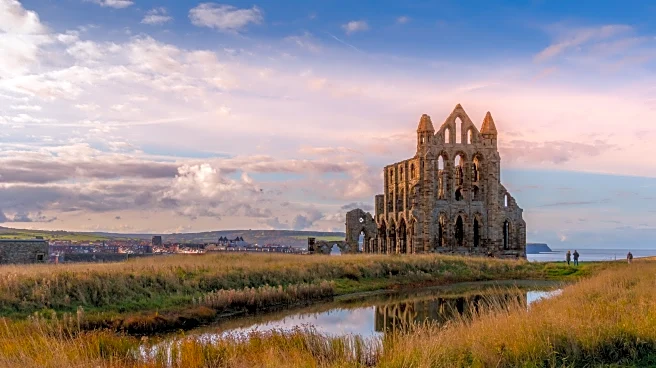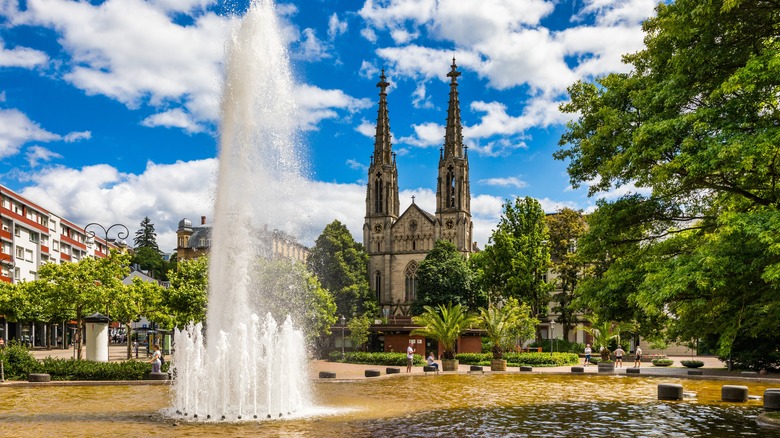
When looking at a map of Germany, you might notice many cities with the word "bad" in their name. It translates to "bath" or "spa," and it indicates a spa town in Germany. There are over 350 of these towns (and even more resorts) in the country, many of them having existed since ancient Roman times, when soldiers would bathe in mineral waters to recover after battle. Spa towns have served an important part of Germany's wellness culture — designated spa towns have to meet water and air regulations
to hold the title, and they're often renowned for their particularly rejuvenating mineral water and grand spa facilities.
Today, spa towns are some of the best destinations you can't skip on a trip to Germany. These towns are designed to cater to spa-goers, with facilities that include pools and saunas, wellness resorts, and even bathing temples. Many still visit these spa towns for their original draw — to tap into the curative potential of their waters. In fact, Germany's public health insurance can include coverage for spa treatments under certain conditions. But there's a special social and cultural purpose the spa towns serve, too. They're places for meeting with friends, unwinding together, and relishing in views of surrounding nature. Shame about the body is released here, where it's not uncommon to find strict rules defining sauna areas as towel-only. Germany embraces comfort with nudity (there are even designated zones around Munich where you can get naked legally).
With so many spa towns to choose from (and so many warm baths), these are a few that stand out above all and have earned the praises of top travel experts. They're full of history, provide the best spa treatment resources, and are simply beautiful settings to relax in between sightseeing adventures.
Read more: The 12 Best Christmas Markets Across Europe
Baden-Baden
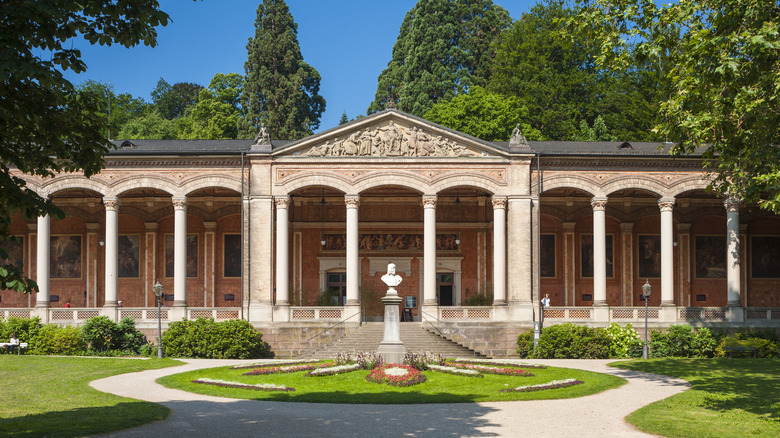
There's a reason Baden-Baden has upheld a noteworthy status as a spa town from the Romans who treated their war injuries in its thermal springs in 200 B.C. to the European nobles during the 19th century's Belle Époque. Sometimes known as the "European capital of the art of living," Baden-Baden is perhaps the chicest of all spa towns in Germany. Travel expert Rick Steves praised the refined feel of Baden-Baden on his website, describing, "Wrought-iron balconies on handsome 19th-century apartment buildings give Baden-Baden an elegant, almost Parisian feel."
Baden-Baden is recognized by UNESCO as one of the "Great Spa Towns of Europe." Two of the main spas in town are Friedrichsbad and Caracalla. Friedrichsbad is most reminiscent of the elegant style of spa culture that prevailed in the 19th century (which is, after all, when it was opened). It includes four thermal water pools, two saunas, plus multiple other rooms arranged in a circuit you pass through in a predetermined order. Caracalla is a more modern facility, and you can walk through its different bathing rooms freely. If you can't decide between either one, follow the advice of German travel blogger LeAnna Brown on her blog WanderInGermany: "I can't recommend a full weekend in Baden-Baden enough. Do one spa on one day and the other on the next."
There's a small airport in Baden-Baden, the Flughafen Karlsruhe, if you're coming from another city in Europe, or you can get to the city from the Frankfurt Airport in between 90 minutes and two hours by high-speed train.
Bad Ems
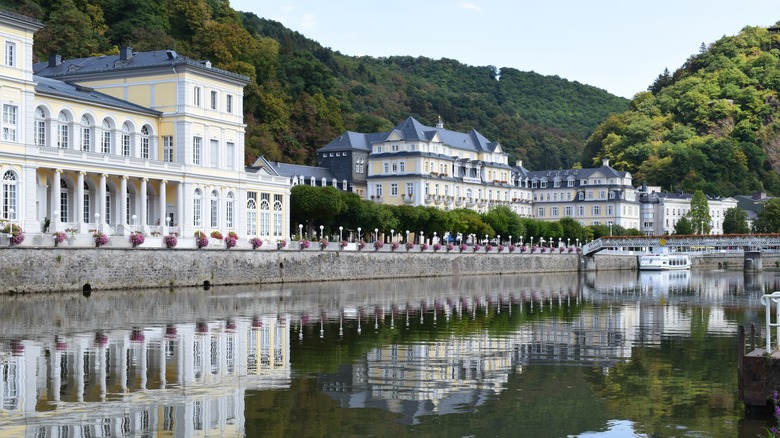
Located in a valley along the River Lahn, Bad Ems is a gorgeously baroque city with a sprawling bathhouse built by a princess. It's easily reached in between an hour and 90 minutes by car from the Frankfurt Airport. The town is structured around its thermal springs, with a delegated "spa quarter" centered around the springs at the bottom of the valley. Travel blogger Wandering Carol wrote of Bad Ems: "You can soak in pools sourced from the hot springs, cycle along the Lahn River to the Rhine, swan around historic buildings and hike to your heart's content." She noted, however, "The spa quarter is compact, and it won't take much time to check out the heritage buildings," so you likely won't need more than a weekend to get the best of Bad Ems.
The heart of Bad Ems is the Häcker's Grand Hotel, which features a bathhouse called the "Princely Oranien Nassauisches Bathhouse" that was commissioned by the Duchess Albertine of Nassau in the early 1700s over well-known mineral healing springs. Though originally the princess's private bathhouse, it became a hotel that served the likes of the Russian royal court and King Wilhelm I. You can book a stay at the hotel or just come to the bathhouse as a daytime guest. Rachel of the travel blog Rachel's Ruminations also recommends: "Make sure to check out the bar in the lobby too, at the far end from the reception desk. Entirely covered in geodes, it makes a truly unique sight." After stopping by the hotel, be sure to check out the Römerquelle Spring, where you can drink from the thermal springs in a Roman-inspired temple structure.
Bad Kissingen
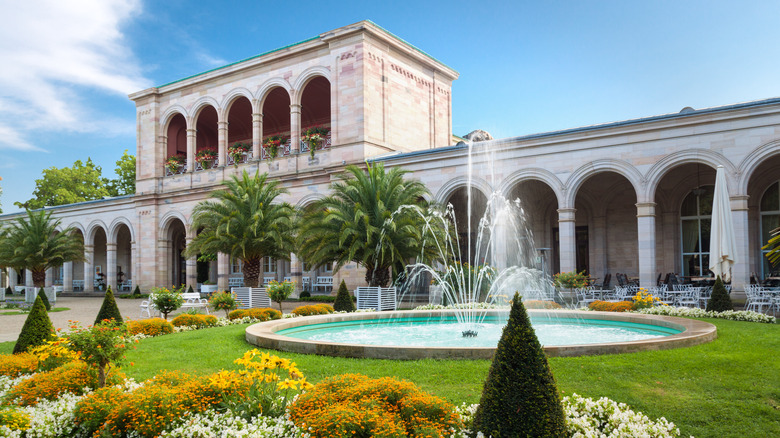
In the German region of Bavaria, you get some of the most magnificent scenery in the country, from the rolling foothills of the Alps to the mesmerizing blue waters of lakes like Walchensee. Bavaria's biggest spa town is Bad Kissingen, which is known for its Art Nouveau architecture, vast fountain hall, and lush, public spa garden. Travel blogging couple Lucie and Martin of the blog Laidback Trip said, "Bad Kissingen offers a variety of activities, from easy walks to good food, thermal baths, and mineral springs, ensuring there's something for everyone." Plus, it's all surrounded by the Rhön Mountains and trails through verdant pastures.
Bad Kissingen's spa-related activities are clustered in a complex of historic buildings, called the spa ensemble, that include the spa garden, 19th-century Luitpoldbad bathhouse, kursaals (entertainment halls for spa-goers), and pump rooms. One of the most intriguing highlights among the spa ensemble is the Fountain Hall, where the healing waters from the springs of Bad Kissingen are served for drinking via taps. There are public fountains for you to serve yourself, or you can allow one of the Brunnenfrau ("fountain women") to pour a glass of mineral water for you.
Aside from its spa-related facilities, Bad Kissingen has a significant music culture. Classical music even accompanies the water-pouring of the Fountain Hall. One of the most renowned buildings is the Regent's Building, which hosts the yearly Kissinger Sommer classical music festival — the building's Green Hall is a magical Art Nouveau ballroom worth seeking out. You can get to Bad Kissingen in about an hour and 45 minutes by car from the Nuremberg Airport.
Wiesbaden
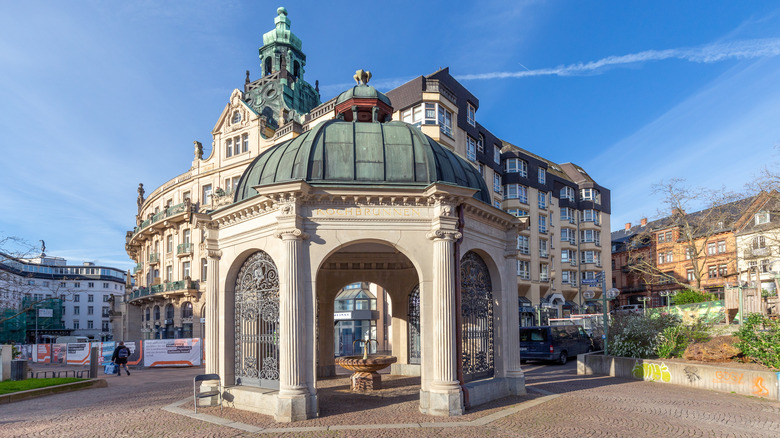
One of the most historically rich and thermally abundant (with 26 healing springs) spa towns in Germany is Wiesbaden, which lies just under 30 minutes by train or car from Frankfurt Airport. Wiesbaden, though it's been active since ancient times, grew rapidly in the 1800s and became a celebrated spa town visited by historic figures like Fyodor Dostoyevsky. It continues to draw visitors with its range of spa-related activities. "From a traditional clothing-free bathing experience at the venerable Kaiser-Friedrich-Therme to the family friendly Thermalbad Aukammtal day resort, Wiesbaden Germany has plenty of options for enjoying the thermal waters," wrote travel blogger Wandering Carol.
Like many of Germany's spa towns, Wiesbaden has been a bathing destination since ancient Roman times, and the town really leans into this Roman history. The ornate Kaiser-Friedrich-Therme bathhouse was built over the site of an ancient Roman sweat bath. Its bathing rooms are reminiscent of a Roman palace, decorated with columns, tiled archways, and sculpture-graced fountains. It's also traditional to drink from the Kochbrunnen, one of the town's springs that gushes in the middle of a charming public square, which is said to have healing properties. Set aside time to explore the main gathering place of the spa town, the palatial Kurhaus — look for its seashell-decorated "Shell Hall" and relax in its English-inspired gardens.
Methodology
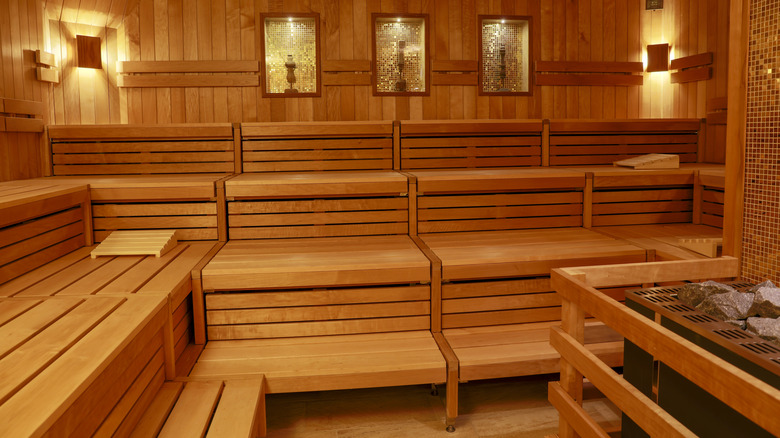
Germany has over 350 spa towns, which all offer a restorative and delightful retreat centered around mineral springs that fuel everything from steam rooms to outdoor fountains. Not every town has the same level of prestige, amenities, and unique flair that make some of them truly magical destinations for travelers. We narrowed down the top spa towns based on the reputations they have with seasoned travel writers and experts, from established blogs. These towns consistently earned praise for their therapeutic offerings, beautiful settings, and rich history, while also meeting a high standard for the quality of their bathhouses and other spa facilities.
Ready to discover more hidden gems and expert travel tips? Subscribe to our free newsletter for access to the world's best-kept travel secrets.
Read the original article on Islands.



